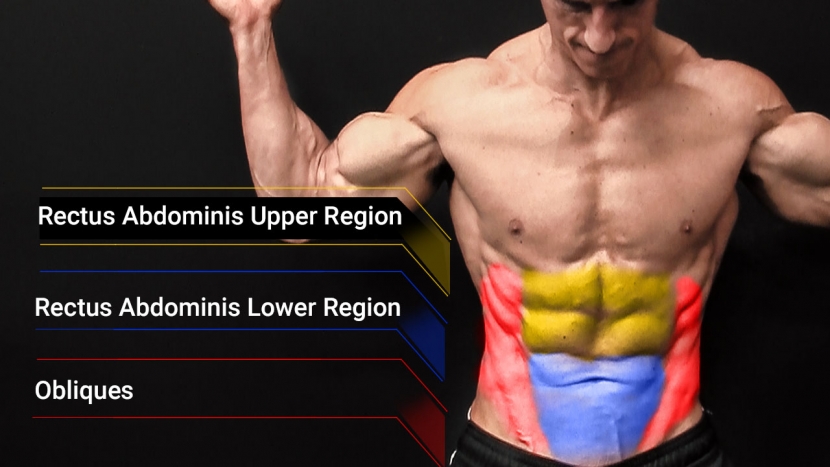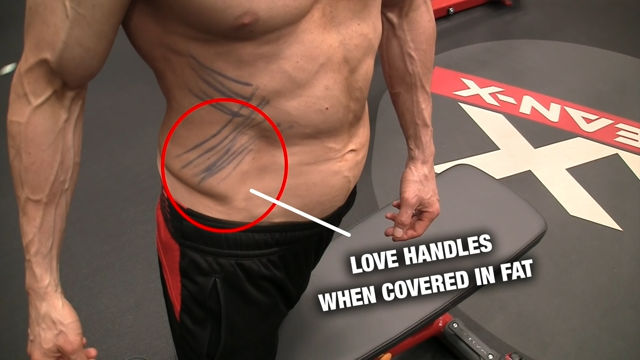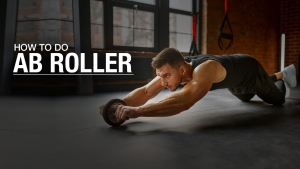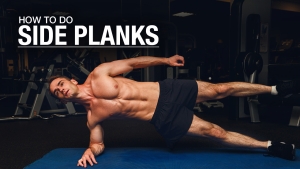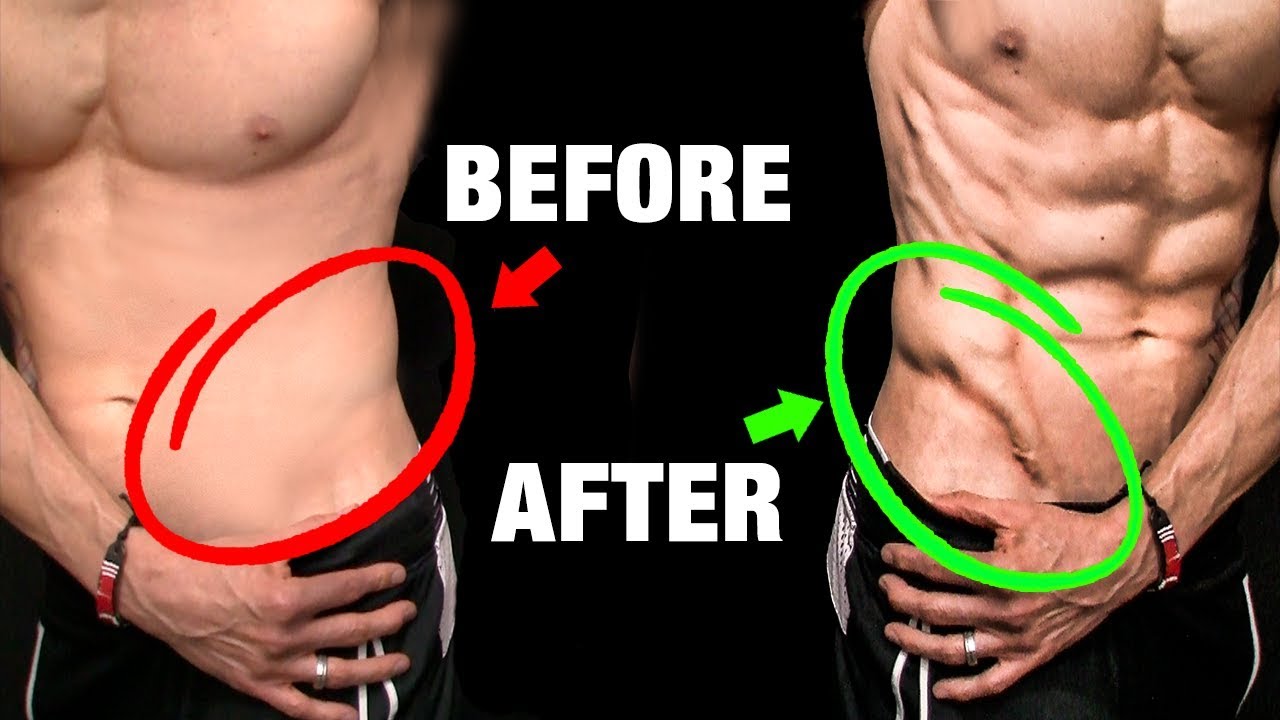
HOW TO GET V CUT ABS
You know that V-cut ab line that goes down below the waistline? This will be a G-rated guide on how to get that deep cut V that points down.
Don’t let people convince you that you need “the right” genetics or a special exercise machine to get V-cut abs. I’ll show you one of the most challenging exercises you can use to develop your very own V-cut abs.
Before I get into the details, I need to share some good news, some bad news, but then more good news.
The first piece of good news is that I’m going to give you actual, practical advice you need so you can start to do what it takes to get V-cut abs. No B.S. I’ll show you one of my favorite moves for a v-cut midsection.
The bad news is that you’ve got to first make a big commitment to eat a healthy diet full of nutrient-dense low-calorie foods in order to get the V-cut ab area visible in the first place.
Your level of consistency is going to have to be very high to reduce your level of body fat significantly. It goes way beyond just doing a bunch of ab exercises.
If you’re looking for something to help guide you, this article shows you a very simple plate technique that will simplify the nutrition process. Simplification will lead to consistency. Don’t follow a fad diet because those will not be sustainable in the long term.
Here’s the other piece of good news. Even though V-cut abs require serious commitment and consistency, there’s no reason why you can’t start training the core muscles that specifically form those V-cut abs while you dial in your diet.
Those core muscles are the oblique muscles.
Let’s take a look at the anatomy of the obliques and I’ll show you exactly what you need to do to activate them so you can start building your V-cut abs.
ANATOMY OF THE OBLIQUES
It’s important that we understand the anatomy of the obliques first because it will guide our training.
The obliques are the abdominal muscles that run in a diagonal pattern across the midsection. They contribute to the body’s ability to twist at the waist in a transverse plane of motion and are part of all strong cores.
They also stand out when they’re developed and not covered with body fat. They’re visible farther up the muscular chain, not just down there at that famous V-cut line. The external obliques supply the shape because the internal obliques that lie underneath aren’t visible. They do provide structure at the V-cut ab line though.
You’ll begin to see the tapering benefits of training the obliques as you lose body fat higher up the torso.
FOLLOW THE FIBERS OF THE OBLIQUES
We always talk about the importance of following the fibers, so let’s break out the muscle markers.
This is what that “V-cut ab” area looks like when covered with fat.
And this is the same area with body fat stripped off. The only difference is the level of body fat. Developed obliques stand out once the body fat is removed.
Next, Let’s take a look at the oblique muscles with the help of my famous Muscle Markers.
The obliques attach to the pelvis at an aponeurosis, a sheet of fibrous tissue that attaches to flat muscles instead of a tendon, due to the wide area involved.
The external obliques attach at their aponeurosis, parallel to the iliac crest of the pelvis and lead down to the inguinal ligament.
EXTERNAL OBLIQUES

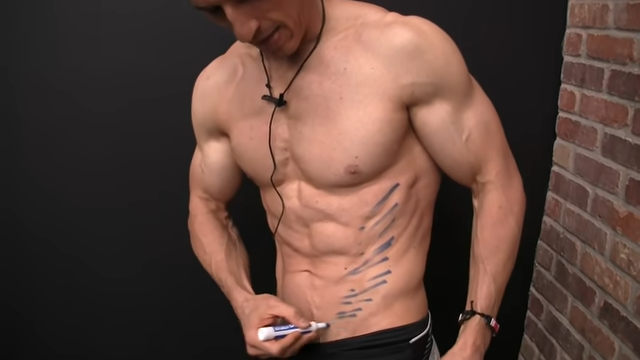
The internal obliques run in an opposing angle to the external obliques and attach perpendicularly into the aponeurosis, and consequently contribute to the definition of the V-cut ab line.
INTERNAL OBLIQUES

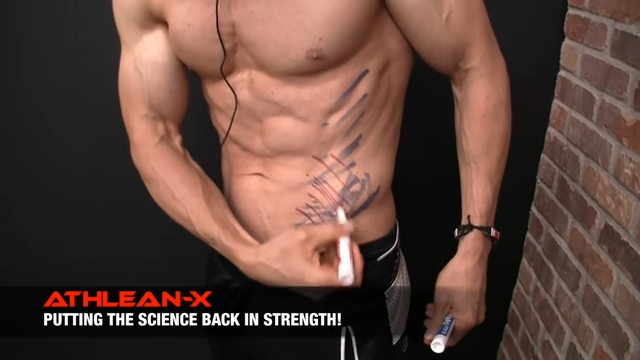
Now you can follow the muscle fibers to inform how you train these core muscles!
WORKING THE OBLIQUES USING 3-PART ACTIVATION
The V-cut ab exercise I’ll show here is performed in a 3-part sequence. Think of it as three exercises in one.
We first focus on the internal obliques. We can’t see them because they’re underneath the external obliques but we can activate them fairly easily.
1) FLATTEN YOUR MIDSECTION
First, lie down on your back, knees bent, feet shoulder width apart, almost as if you were about to do a basic crunch. Next, flatten your entire midsection by pulling your stomach down toward the floor to activate the transverse abdominis, the deepest of the abdominal muscles.

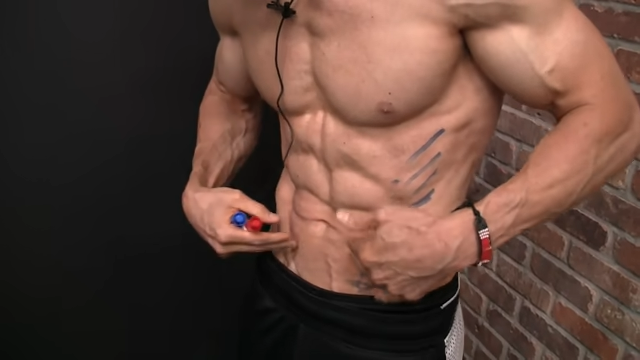
If you’re already lean, you will see that V-line pop when you do this. That’s because the transverse abdominis has its own tendinous sheath that blends with the internal obliques’ tendinous sheath that attaches into the V-Cut ab line.
2) DO A POSTERIOR PELVIC TILT
The second part is getting basic abdominal activation with a posterior pelvic tilt movement.

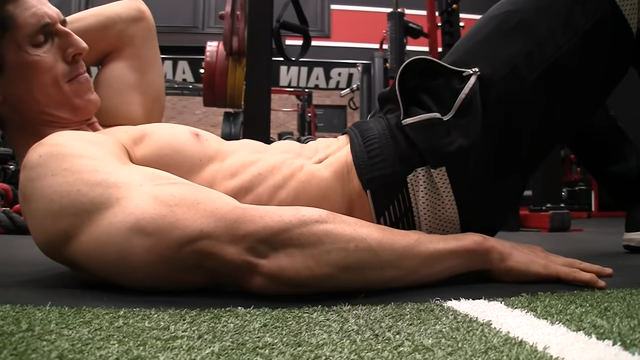
From your supine starting position (on your back), maintain that transverse abdominis activation from Step 1, then pull up with a trunk curl to get more abdominal contraction.
Roll your hips up and off the floor as you pull your belly button down toward the ground. Notice the space between my butt and the floor at the same time my stomach presses my lower back hard against the floor.
This step doesn’t require you to raise your shoulders like you would with crunches.
Now here comes the most important part where your shoulders will move a little.
3) ROTATE
Don’t let go of Steps 1 and 2. With your mid-section flattened and pelvis tilted up, rotate your upper body toward the side of the V-cut ab line you want to contract.
To work the left side of your V, rotate your right side diagonally and downward toward your right knee at roughly a 45-degree angle, and vice versa for the right.
Your shoulders will come off the floor at this point. It’s somewhat similar to knee-to-elbow sit ups but not quite. This is where you move your shoulders, but not both at the same time.

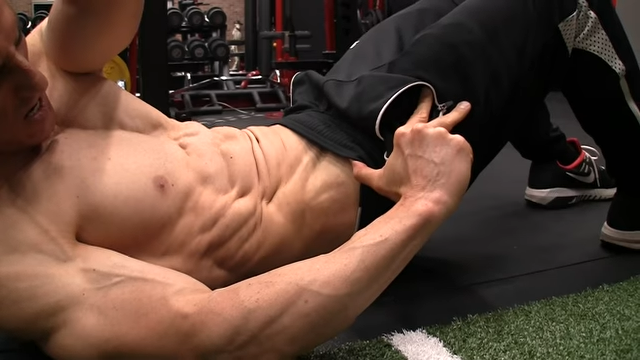
This contralateral movement is going to contract the internal oblique on the side you’re rotating toward.
If you can get contraction through the internal obliques, the force will transmit through the aponeurosis, and activate the muscle tissue that creates that V-cut ab line you’re trying to develop.
Include this neuromuscular contraction drill one side at a time along with your ab workout–which I suggest you do at least 3 to 5 times per week. If you’re on an ATHLEAN-X plan, you should train these daily, along with your other ab and core exercises (crunches, etc.)
Do 2 or 3 sets of 10 quality contractions, holding each contraction 6 to 7 seconds.
If you do this 3-step neuromuscular contraction drill using strict form and get disciplined about your nutrition, your V-cut line will become much more prominent.
Getting disciplined about your nutrition means you have to adopt a consistent, healthy diet that includes the right proportions of lean protein, fibrous and starchy carbs, and that avoids sugary and fatty foods. It’s possible to get your lean protein from plants, if you lean toward being vegetarian or vegan.
For the best training programs and meal plans that help you build muscle while losing body fat, check out all our ATHLEAN-X programs to see which one best fits your goals.

- It’s possible for anyone to develop that famous V-cut abs line without crazy diets or thousands of crunches.
- The V-cut ab line is created by the junction of the internal obliques and external obliques with their fibrous attachment to the pelvis, the aponeurosis.
- A 3-step neuromuscular contraction drill develops that attachment. Losing superficial body fat is crucial to making the area visible once it’s developed. It can be well-developed and still be hidden from sight by fat. This is one of my favorite moves to develop a V-cut midsection.
- Step 1 of the contraction drill is flattening the stomach area. Lie supine on the floor and draw your belly button strongly downward toward the floor. If you’re already lean, you’ll see the V-cut line pop.
- Perform a posterior pelvic tilt for Step 2, while keeping the belly tight from Step 1.
- The most important step is Step 3. Without letting go of Steps 1 and 2, rotate contralaterally diagonally toward the opposite side, following the fibers.
- Hold each contraction for 6 or 7 seconds. Do 2 or 3 sets of 10 of this 3-step contraction drill anytime you train abs.
- Add this to your regular abdominal workout routine 3 to 5 times per week.
- Eating a healthy diet consistently is also necessary to make these muscles visible.

Jeff Cavaliere M.S.P.T, CSCS
Jeff Cavaliere is a Physical Therapist, Strength Coach and creator of the ATHLEAN-X Training Programs and ATHLEAN-Rx Supplements. He has a Masters in Physical Therapy (MSPT) and has worked as Head Physical Therapist for the New York Mets, as well as training many elite professional athletes in Major League Baseball, NFL, MMA and professional wrestling. His programs produce “next level” achievements in muscle size, strength and performance for professional athletes and anyone looking to build a muscular athletic physique.
















